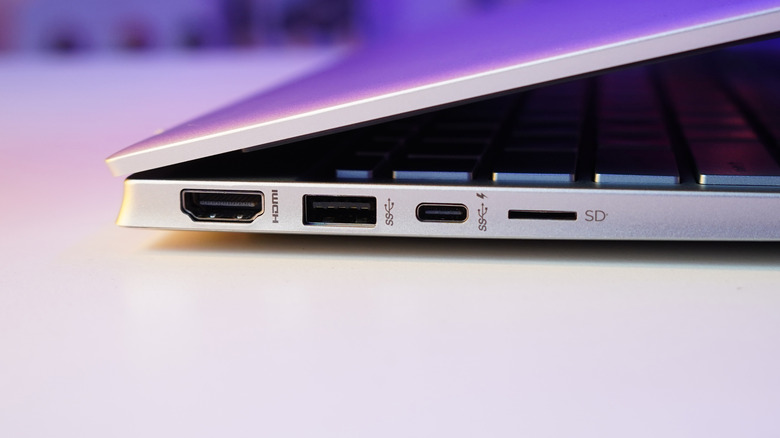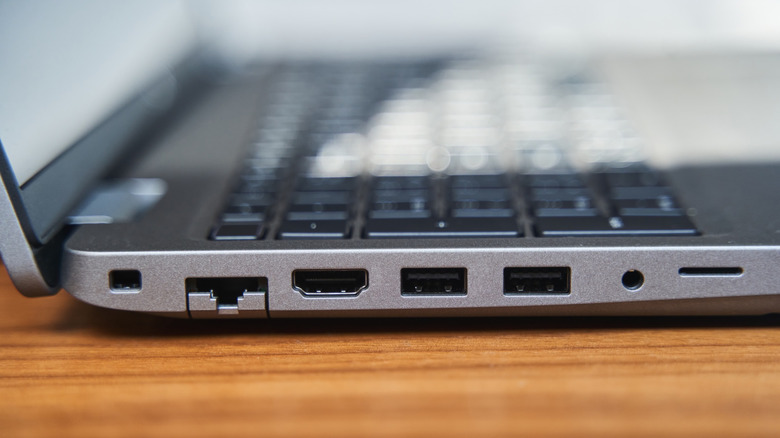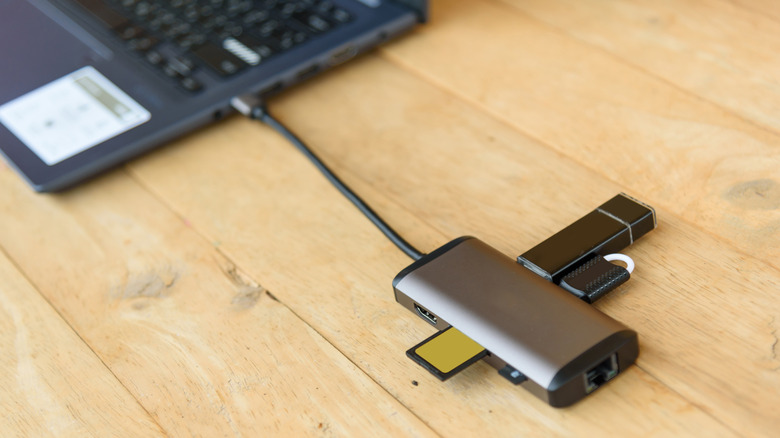How Many USB Ports Do You Need On A Laptop? Here's What To Look For
We may receive a commission on purchases made from links.
Laptops used to boast of enough ports to plug in a mouse, a flash drive, maybe even a printer, all at once. These days, you're lucky if you get two. As laptops have gotten thinner and sleeker, the humble USB port has become collateral damage in the war on bulk. Manufacturers assume you'll adapt with dongles, hubs, or Bluetooth everything. But you still need USB ports. The question now is: how many?
Well, there's no one-size-fits-all answer. It depends on what you do and how you work. A writer who mostly lives in the cloud can probably survive with two ports — one for charging, one for the occasional external drive. But a video editor juggling cameras, drives, and peripherals will hit that ceiling before breakfast. Even students who only plug in flash drives or phones might need to charge something else at the same time.
The goal, then, isn't just to count ports. It's to understand what kinds you're getting and what you'll need day-to-day. USB-A or USB-C? Thunderbolt or just data transfer? Here's how to figure out the right number (and type) of USB ports for you, based on how you actually use your machine.
How Many USB Ports You Actually Need
For most people, the sweet spot is a laptop with at least three to four ports that cover both current and legacy needs. At minimum, you'll want one USB-A port for older peripherals like flash drives, keyboards, or mice. If it's USB 3.2 or newer, you also get faster data speeds and even power delivery in some cases.
Pair that with a USB-C port and you're future-proofed, since nearly all new devices now use USB-C. It can handle charging, data transfer, and display output all at once. If it happens to support Thunderbolt 4 or USB4, even better; it can replace several ports in one go. In most cases, USB-C ports will coexist alongside a full-size USB-A port, but it's becoming increasingly common to find laptops that only have USB-C ports; for example, the latest MacBook Air and MacBook Pro have both now done away with USB-A ports in favour of a pair of USB-C ports apiece.
Add to that an audio jack for occasional wired headphone use or plugging into sound systems, and ideally, an RJ-45 Ethernet port for times when your Wi-Fi is acting up or just doesn't cut it. Many new-gen laptops skip Ethernet for thinness, but wired connections still deliver faster, steadier speeds when streaming, gaming, or downloading large files. If your work leans more specialized, adjust accordingly. Content creators may want extra USB-C or HDMI ports for external drives and monitors, and gamers might prioritize more USB-A ports for controllers and peripherals, or even a dedicated DisplayPort for higher refresh-rate monitors. The goal isn't having as many holes in your laptop as possible—it's having the right mix for your specific needs.
If You Need To Expand Your Setup...
If you're working with an older laptop, you don't have to be stuck with its limited I/O forever. A good hub or docking station can breathe new life into your setup, so you don't have to think about an upgrade just yet. Your best bet is a powered USB-A hub; older laptops often can't supply enough power through their built-in ports to reliably run multiple peripherals at once, so you'll need that extra muscle. Some newer hubs even include one or two USB-C ports, but those typically come with limits on data transfer or charging speeds.
If your laptop does have at least one USB-C port, consider stepping up to a full-featured USB-C or Thunderbolt dock instead. These can also add HDMI or DisplayPort outputs, SD card slots, more USB-C and USB-A ports, and even wired Internet functionality. If you work from a desk or run multiple screens, go for a powered docking station, like Kingwin's, instead. It's bulkier, but it can handle heavier loads without draining your laptop battery, whether that's dual monitors, high-speed drives, or wired internet. Stick with reliable brands like Anker, Belkin, or Satechi because cheaper, unbranded hubs often overheat, cause intermittent disconnects, or fail to deliver full bandwidth. Make sure to check for compatibility, too. Thunderbolt 4 docks offer the best performance on modern laptops, but older USB-C models might not support them fully.
Adapters are another underrated fix. HDMI-to-VGA dongles, USB-to-Ethernet converters, or even simple 3.5mm splitters can extend functionality without much cost. Just avoid stacking too many adapters at once; signal degradation and loose connections can cause more headaches than they solve.


